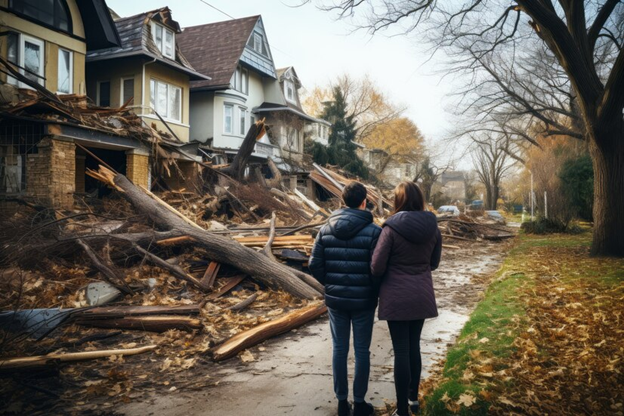Property damage can be a costly and stressful ordeal for homeowners and renters alike. Whether it’s caused by natural disasters, accidents, or negligence, the aftermath of property damage can disrupt lives and finances. However, with proactive measures and foresight, much of this damage can be prevented.
Here, we’ll explore five effective strategies that homeowners and renters can implement to safeguard their properties and minimize the risk of damage, ensuring peace of mind and security for themselves and their families.
1. Identify and Fix Leaks Quickly
Among the most costly types of property damage are leaks and burst pipes that cause water damage. Property owners need to be alert for leaks and take prompt action. Water leaks damage carpets and furniture, encourage the spread of mold, and even jeopardize the building’s structural stability. The best course of action in the event of a suspected leak is to turn off the main water supply and hire an expert to locate the leak’s source and start any necessary repairs.
2. Keep Tabs on Heat and Humidity
Poor ventilation and temperature control are other risks for commercial and residential spaces. Rising temperatures and high humidity negatively affect the air quality and can lead to mold growth, rotting wood, and warped floors.
However, by hiring a well reputed building design engineering company, property owners can fortify our structures against these threats. By strategically installing HVAC systems and ductwork, engineers ensure optimal airflow and distribution throughout the building, effectively combating the adverse effects of heat and humidity.
3. Reinforce the Roof
When severe weather strikes, your home’s roof is the area that is most exposed. Preventing property destruction requires ensuring its stability and resilience. Plan routine expert roof inspections to identify and repair any wear or damage indicators.
Hurricane straps or clips, which may firmly fasten the roof to the house’s frame, are a good idea for strengthening your roof. Additionally, think about utilizing impact-resistant roofing materials, such metal roofing or asphalt shingles made to survive strikes from debris at high speeds.
4. Invest in Storm Protection
Every property owner needs to take preventative action to avoid damage from storms. Heavy rains, winds, and blizzards can knock down trees, cause flooding, and more. Aas a property owner, you should prepare for sudden storms by trimming trees, installing storm shutters, and taking care of low-lying areas that easily collect water. Additionally, leveraging directional drilling services can aid in the installation of underground stormwater drainage systems, diverting excess water away from vulnerable areas and minimizing the risk of flooding during severe weather events.
5. Trim Trees and Shrubs
Although dense landscaping enhances the aesthetics of your home, overgrown bushes and trees can become dangerous during storms. Regular pruning of trees and shrubs lowers the possibility of branches breaking and damaging your house or nearby properties.
When severe weather strikes, you can avoid potential property damage by proactively cutting trees away from power lines and the roof of your home. Additionally, it can keep your house from losing electricity during a storm because a tree might break the link that powers your house from the power line.
